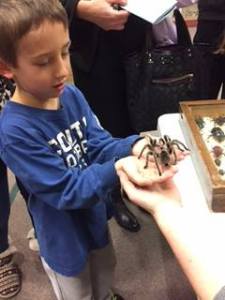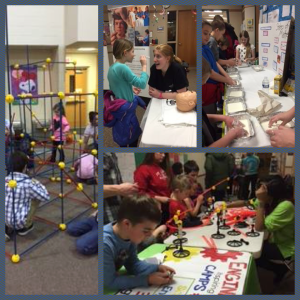 This two-part story is a wonderful example of how great teachers foster deep and meaningful learning. As you read about the Celebration Houses project, notice how Indiana’s Academic Standards are addressed in ways that are inquiry-based, engaging, and authentic. Notice how student teams collaborate towards a final creative product. One more…Notice how technology was employed purposefully as a cognitive learning tool!
This two-part story is a wonderful example of how great teachers foster deep and meaningful learning. As you read about the Celebration Houses project, notice how Indiana’s Academic Standards are addressed in ways that are inquiry-based, engaging, and authentic. Notice how student teams collaborate towards a final creative product. One more…Notice how technology was employed purposefully as a cognitive learning tool!HSE21 Shorts asked fifth grade teachers Amber Hudson and Lisa Keaffaber, from Hamilton Southeastern Intermediate & Junior High, to take us into their ‘teacher brains’ to explain how this learning experience connected content from across the curriculum. In our next post, we’ll examine ways in which this project fostered community connections both within the classroom and throughout our city.
Q: How did this project come about?
A: It all started when Amber said, “Hey, I heard about this gingerbread house idea, and I think we should try it.” After brainstorming some ideas on how to incorporate it into our curriculum, standards, and our students’ interests, the Gingerbread Celebration House Project was born.
Students returned from Thanksgiving break to find the classrooms transformed. In place of desks were heaps of cardboard and cardboard boxes. Hanging around the rooms were 31 QR codes with pictures, and huge sheets of paper with thought-provoking questions.
Before students could experience the room, we read two picture books: one on being an American and one on faith. Both books focused on the beautiful differences that are among us and seen in our celebrations of faith. After experiencing the songs, dances, videos, and pictures of the various holidays via the QR codes and pictures, each student uploaded a video to FlipGrid explaining which celebrations they found most interesting. This is how we determined which student would construct which house.
 Q: What were your goals for the project?
Q: What were your goals for the project?
A: Our goals were to give students an awareness and appreciation of cultural celebrations from around the world that occur throughout the year AND to have them share their understanding with the people of Fishers.
Though many families in our district do celebrate Christmas, other important holidays are celebrated by families in our classroom and around the world that are also significant and special.
Q: How did the learning experience align with academic standards?
In humanities class, social studies is incorporated into reading and writing. Through reading, students discovered both similarities and differences they had with other students’ traditions. For example, light (as in candles and strands of lights) are a common feature in holidays for Buddhists, Christians, Jews, and Muslims.
Here is a sample of Indiana Academic Standards for humanities subjects that were addressed in this project:
Reading standards:
- Determine two or more main ideas of a text.
- Explain the relationships or interactions between two or more events, ideas, or concepts based on specific information in the text.
- Combine information from several texts or digital sources on the same topic in order to demonstrate knowledge about the subject.
- Determine the meaning of general academic and content-specific words and phrases in a nonfiction text relevant to a fifth grade topic or text.
Writing standards:
- Introduce a topic; organize sentences and paragraphs logically, using an organizational form that suits the topic.
- Employ sufficient examples, facts, quotations, or other information from various sources and texts to give clear support for topics.
- Connect ideas within and across categories using transition words (e.g., therefore, in addition).
- Include text features (e.g., formatting, pictures, graphics) and multimedia when useful to aid comprehension.
In STEM (Science-Technology-Engineering-Math) class, math and science are interwoven for a more real world experience. Constructing and decorating the Celebration Houses became an authentic means through which students could practice STEM skills. Students used the engineering design process to develop a viable structure for their house; they then applied their skills to construct and decorate their houses. Hands on. The engagement was through the roof — literally!
Math standards:
- Multiply multi-digit whole numbers fluently using a standard algorithmic approach.
- Add, subtract, multiply, and divide decimals to hundredths, using models or drawings and strategies based on place value or the properties of operations. Describe the strategy and explain the reasoning.
- Solve real-world problems involving multiplication and division of whole numbers and decimals
- Find the area of a rectangle with fractional side lengths by modeling with unit squares of the appropriate unit fraction side lengths, and show that the area is the same as would be found by multiplying the side lengths. Multiply fractional side lengths to find areas of rectangles, and represent fraction products as rectangular areas.
Enjoy the Celebration House photos below, and be on the lookout for Celebration Houses 2, as the Celebration Houses head out to the Fishers community!
 We are Miss Sugg’s class. This year we made it a class goal to serve in at least 3 different kindness projects this year. After watching videos and reading books on how to spread kindness, we brainstormed ways to show kindness in our community. Who deserves appreciation? What should we do for them? How can we make this happen? This is how The Donut Kindness Project got started!
We are Miss Sugg’s class. This year we made it a class goal to serve in at least 3 different kindness projects this year. After watching videos and reading books on how to spread kindness, we brainstormed ways to show kindness in our community. Who deserves appreciation? What should we do for them? How can we make this happen? This is how The Donut Kindness Project got started! Students created a list of tasks that would need to be accomplished, and each student chose a job according to their interests and passion. Students wrote persuasive letters to the principals (to seek permission for the project!), made parent invitations, contacted donut shops, and researched where, who and how they would serve.
Students created a list of tasks that would need to be accomplished, and each student chose a job according to their interests and passion. Students wrote persuasive letters to the principals (to seek permission for the project!), made parent invitations, contacted donut shops, and researched where, who and how they would serve. With jobs completed and a plan in place, the class was ready to invite the principals into the classroom to share the project plan and ask for permission to make it happen! Students delivered letters to Square Donuts and Taylor’s Bakery (both within walking distance of the school) to ask for their partnership.
With jobs completed and a plan in place, the class was ready to invite the principals into the classroom to share the project plan and ask for permission to make it happen! Students delivered letters to Square Donuts and Taylor’s Bakery (both within walking distance of the school) to ask for their partnership. With the “Go-ahead” from our principals and help from the local bakeries, were off to our Kindness Walk! Our first stop was at Square Donuts to pick up our 4 boxes of donated donuts! During our walk we donated a box to the Fishers Police Department, the Fishers Fire Department, the Fishers Public Library, and to local construction workers! We ended our walk with a pit stop at Taylor’s Bakery to celebrate our hard work and success with some donut holes for our own!
With the “Go-ahead” from our principals and help from the local bakeries, were off to our Kindness Walk! Our first stop was at Square Donuts to pick up our 4 boxes of donated donuts! During our walk we donated a box to the Fishers Police Department, the Fishers Fire Department, the Fishers Public Library, and to local construction workers! We ended our walk with a pit stop at Taylor’s Bakery to celebrate our hard work and success with some donut holes for our own!








 This two-part story is a wonderful example of how great teachers foster deep and meaningful learning. As you read about the Celebration Houses project, notice how Indiana’s Academic Standards are addressed in ways that are inquiry-based, engaging, and authentic. Notice how student teams collaborate towards a final creative product. One more…Notice how technology was employed purposefully as a cognitive learning tool!
This two-part story is a wonderful example of how great teachers foster deep and meaningful learning. As you read about the Celebration Houses project, notice how Indiana’s Academic Standards are addressed in ways that are inquiry-based, engaging, and authentic. Notice how student teams collaborate towards a final creative product. One more…Notice how technology was employed purposefully as a cognitive learning tool! Q: What were your goals for the project?
Q: What were your goals for the project?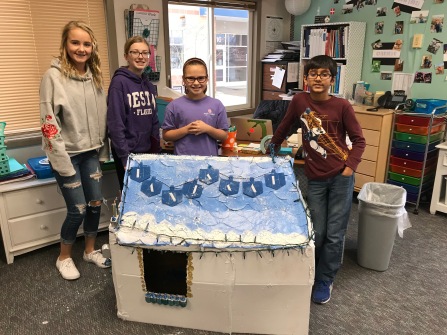





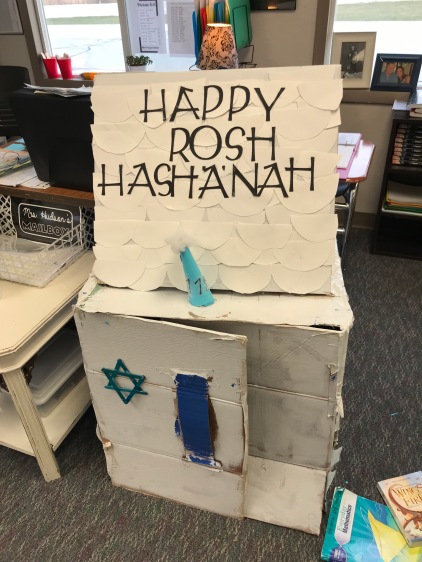













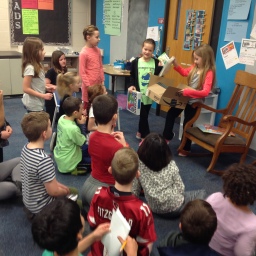

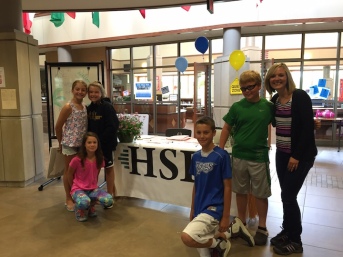




 or rigorous and relevant digital content, and have explored their role as modelers of digital citizenship for this generation. With the help of Matt Miller (
or rigorous and relevant digital content, and have explored their role as modelers of digital citizenship for this generation. With the help of Matt Miller (

